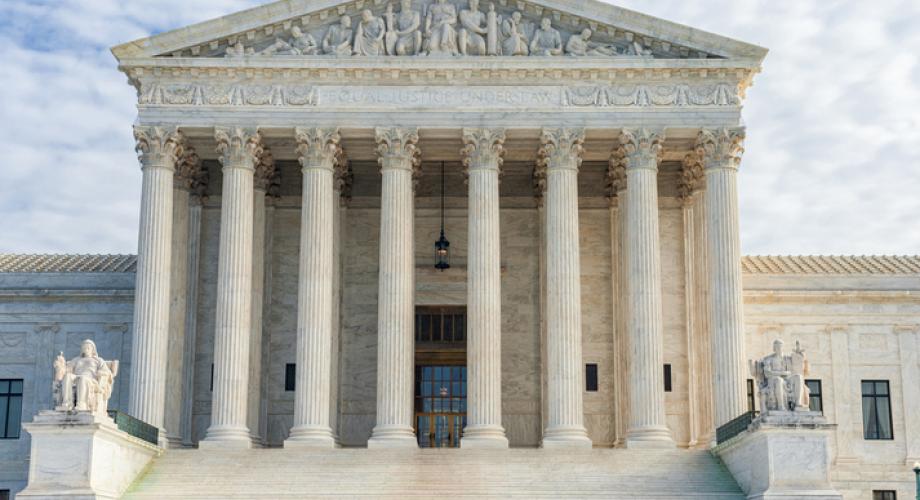The U.S. Supreme Court (SCOTUS) delivered yet another blow to federal agencies on Monday, July 1, 2024, in Corner Post, Inc. v. Board of Governors of the Federal Reserve System. In a 6-3 decision, SCOTUS expanded the ability for plaintiffs to sue regulatory agencies. This decision, along with the recent overturning of Chevron, marks a significant shift away from agency powers and continues to make it easier for federal regulations to be challenged in court.
Overview
Corner Post, Inc., a North Dakota convenience store and truck stop joined a lawsuit against the Federal Reserve Board in 2021, challenging a rule called Regulation II under the Administrative Procedure Act (APA). Regulation II also known as the Durbin Amendment, is an amendment to the Dodd-Frank Wall Street Reform and Consumer Protection Act of 2010. Corner Post alleges that Regulation II is unlawful under the APA, arguing that its debit interchange fee is arbitrary and capricious. The complaint states that the Federal Reserve Board’s fee “is contrary to the law and exceeds the Board’s statutory authority because it is not reasonable and proportional to the cost incurred by banks.”
A Federal District Court quickly dismissed the case, citing the claim was time barred under 28 U.S.C. §2401(a)’s 6-year statute of limitations. A Federal Appeals Court upheld the District Court’s dismissal of the case, but SCOTUS intervened and remanded the case for further proceedings. The justices ruled that an APA claim does not begin to accrue until the plaintiff has been injured by final agency action. Therefore, Corner Post is still within their statute of limitations and can move forward with their claim against the Federal Reserve Board because the company was not injured by the regulation until after its formation in 2018.
In this case, a pivotal issue, if not the pivotal issue, revolves around determining when the right of action truly begins to accrue. Does it commence upon publication of agency regulation or upon the occurrence of an injury caused by that regulation? Justice Barrett answers these questions in her opinion emphasizing that, “an APA plaintiff may not file suit and obtain relief until she suffers an injury from final agency action, the statute of limitations does not begin to run until she is injured.” SCOTUS therefore disagrees with the Federal Reserve Board and both lower courts who asserted that the right of action commences when agency action is final.
SCOTUS Sets New Precedent
A central piece of SCOTUS’s deliberation was to interpret the language in §2401(a) of the APA. The lower courts in this case interpreted the regulation’s language as a defendant protective statute of repose, which would initiate the statute of limitations period from the date of final agency action. SCOTUS emphasized their disagreement with this interpretation; Justice Barrett noted firmly in her opinion that the Board’s arguments to that point lack merit.
The court emphasized that a right of action only accrues once “the plaintiff has complete and present cause of action” and that is only after the plaintiff is injured. The court’s opinion highlighted that the plaintiff cannot have been injured prior to even opening its’ doors. Corner Post first opened in 2018, several years after Regulation II went into effect.
The Role of Congress
Justice Kavanaugh wrote a concurring opinion, adding that an important piece to understanding why Corner Post can obtain relief is because “[t]he APA authorizes vacatur of agency rules; therefore, Corner Post can obtain relief in this case.” Justice Kavanaugh noted this is ultimately the only way they can receive relief in this case. He adds that “vacatur is an appropriate remedy when a federal court holds that an agency rule is unlawful."
In Justice Jackson’s dissent, which Justice Sotomayor and Kagan joined, she harshly criticizes the court’s opinion, noting “[t]he flawed reasoning and far-reaching results of the Court’s ruling in this case are staggering.” She continues to say, “that a plaintiff’s injury is utterly irrelevant to a facial APA claim.” The decision was clearly split down the ideological middle, yet the Justices unanimously agreed that the matter now rests with Congress for further clarification. Justice Barrett referencing in her opinion that section 2401(a) is 75 years old and “[i]f it is a poor fit for modern APA litigation” then Congress needs to enact a solution.
Industry Impact
Much like with the outcome of the Loper Bright Enterprises decision, where SCOTUS overturned the Chevron doctrine, the rental housing industry may see an uptake in industry-related litigation. Many federal agencies such as the Federal Housing Finance Agency (FHFA) and the U.S Department of Housing and Urban Development (HUD) will be directly impacted by this decision. Now that the statute of limitations under the APA has been widened, businesses have additional time to seek judicial review of regulations they believe are unlawful. But Justice Jackson believes this will only invite manipulation by businesses to get around limitations they’ve already run. She mentions in her dissent that “the Court wreaks havoc on government agencies, businesses and society at large.”
The National Apartment Association’s (NAA) Legal Affairs team will continue to track the aftermath of the high court’s decision and its impact on the rental housing industry. Read the Supreme Court’s full opinion.
Deeper Dive: Want to learn more about maximizing your chance of obtaining Supreme Court review? Register for this webinar: Out of the Supreme Court’s Haystack with Michael Huston on Wednesday, July 24, 2024, at 2 p.m. ET
